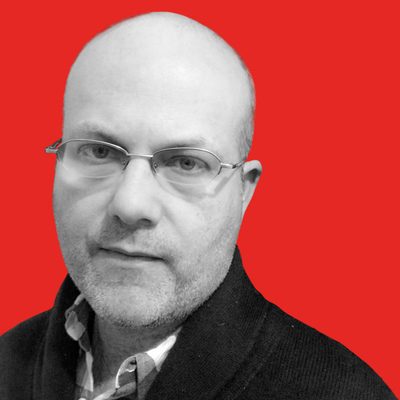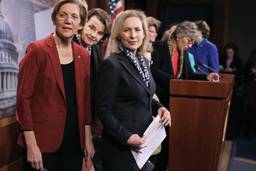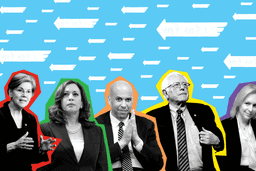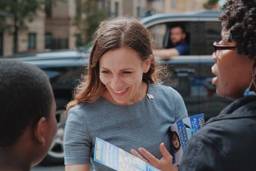By Theo Anderson
Here’s a development that has little practical effect but highlights a profound shift in American society and politics. John Paul Stevens, currently the only Protestant Justice, will retire at the end of the current Supreme Court session. So there’s a reasonable chance that there will be no Protestants on the Court when it reconvenes this fall, and that seven of the nine Justices will be Roman Catholic.
The solid conservative bloc that has driven the Court progressively to the right since Sandra Day O’Connor resigned, in 2006, consists of five Catholics—John Roberts, Antonin Scalia, Anthony Kennedy, Clarence Thomas, and Samuel Alito. President Obama's recent appointee, Sonia Sotomayor, is also Catholic. Stephen Breyer and Ruth Bader Ginsberg are Jewish. The Court’s makeup is a startling inversion of the historical norm. Since the Court was established in 1789, there have been only twelve Catholic Justices, half of which are now serving. There have been only seven Jewish justices. The first, Louis Brandeis, was appointed in 1916.
You can read Protestantism’s recent, near-total eclipse in many ways. It reflects a growing tolerance for religious diversity, of course, and the fact that “white Anglo-Saxon Protestants” have been forced to share the reins of power over the past few decades. But what seems most interesting about the Court’s constitution is what it reveals about the shifting center of gravity within conservatism and the GOP.
In the late 19th and early 20th centuries, when large segments of the Catholic population in the U.S. were recent immigrants, they aligned solidly with the Democratic Party, because urban, Democratic political machines gave them jobs. The New Deal in the 1930s tightened this alliance and guaranteed its durability for half a century. The pastoral letter published by U.S. Catholic bishops in 1986, titled “Economic Justice for All,” was a marvel of progressive economic thinking. “Every economic decision and institution,” it asserts, “must be judged in light of whether it protects or undermines the dignity of the human person.”
The Church’s concern with economic justice has not entirely disappeared, but the old alliance between Catholics and Democrats has been weakening since the 1980s, as cultural and values issues have become more prominent in American politics and within the Church. This is especially true among conservative Catholics who resent the reforms that were initiated by Pope John Paul XXIII and the Second Vatican Council. The Church's proper role, they believe, is to stand as a bulwark against the corruption and moral decay inherent in secular, liberal modernity.
Karl Rove recognized this shifting landscape, naturally. Conservative Catholics became a key voting bloc for George W. Bush in the 2000 election and, particularly, in his re-election in 2004. In 2008, The New Yorker ran a piece that explained how the Rove “discovered” the conservative Catholic vote and began courting it:
In the autumn of 1998, when Karl Rove was contriving to make Governor George W. Bush President and to build a lasting Republican majority, he came upon “The Catholic Voter Project,” a study of voting behavior in national elections since the Kennedy-Nixon contest of 1960. Catholics make up more than a fourth of the electorate, but they had long defied political targeting. This was because, since 1972, Catholic voters had essentially mirrored the rest of the electorate, making it impossible for political professionals to shape a distinctive Catholic message—or even to know for certain whether there was such a thing. The study, commissioned by the magazine Crisis, concluded that the issues that moved Catholic voters could, in fact, be discerned; it was simply a matter of redefining the Catholic vote.
The term “Catholic voter,” the study argued, was meaningless, reflecting an answer given to exit pollsters, and not much more. The only relevant Catholic voter was one whose vote was influenced by the fact of being a Catholic. The Crisis project compared the voting behaviors of active Catholics—those who regularly attended Mass—and inactive Catholics, and found a clear distinction. Active Catholics characterized themselves as being more conservative than Catholics as a whole, and, although they did not necessarily identify with Republicans, they were in the vanguard of the thirty-year Catholic march out of the Democratic Party. They were patriotic, anti-abortion, and pro-family (believing, for example, that divorce laws should be tightened).
The alliance between Catholicism and political conservatism in the U.S. seems logical and inevitable, in retrospect, since the intellectual architect of the modern conservative movement, William F. Buckley, was a traditionalist Catholic. His God and Man at Yale, published in 1951, provided a template for cultural warriors from the 1970s up to the present day. Its urgent message, on the social side, is that we cannot be good without belief in God. (On the economic side, it’s that we cannot be truly free or prosperous without an unfettered free market.) Beyond Buckley, there has been a long and respectable tradition of conservatism among Catholic intellectuals. And there have been several influential, conservative Catholic polemicists over the years—from the late Robert Novak to the rising star Ross Douthat, recently given a column by the New York Times.
If conservative Catholicism is a rising force in American politics generally, it has not yet produced a Republican nominee for president. But that, too, seems just a matter of time. Newt Gingrich is no doubt hoping to be the first. He converted to Roman Catholicism in March of last year, and told U.S. News and World Report that “the whole effort” of liberalism “to create a ruthless, amoral, situational ethics culture has probably driven me toward a more overt Christianity.” Since then, he’s shown the zeal of a convert and has been busying himself with “rediscovering” God in American history.
It’s easy to write Gingrich off as a charlatan, cynic and buffoon, and just ignore him. And it’s hard to believe that anyone takes him seriously, watching him huff and puff about Obama’s radicalism and the “secularist-socialist machine” that now dominates American politics. But whatever else he is, Gingrich is a savvy political animal. He knows which way the wind is blowing and how to sniff out the votes. He’s a historian by training but prides himself on his keen grasp of the future: back in the '90s, he constantly cited the work of the futurist Alvin Toffler as an important influence on his thinking.
The deepening alliance between conservatism and Catholicism is a political force to be reckoned with—one that is likely to grow much more powerful in the coming years. This is one of the few things that Gingrich grasps clearly. And it’s a truth worth keeping an eye on.
Theo Anderson is an In These Times contributing writer. He has a Ph.D. in modern U.S. history from Yale and writes on the intellectual and religious history of conservatism and progressivism in the United States. Follow him on Twitter @Theoanderson7.





